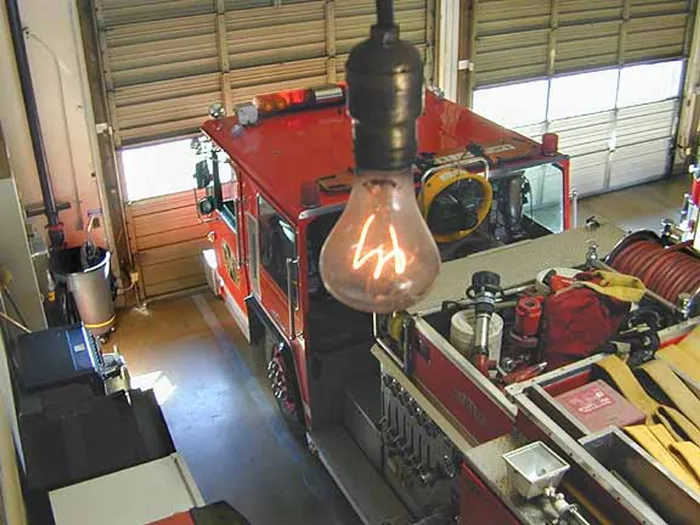OPINION: Some light reading

IF YOU have the money, time, visa and the inclination, then one day you can take a trip to Livermore California, where at 4550 East Avenue you can visit the Livermore-Pleasanton Fire Department to feast your eyes on a 60-watt light bulb that only emits the equivalent of around 4 watts of light.
I know it sounds rather dull – did you catch what I just did there? But the thrilling thing about this particular light bulb is the fact that it is the Centennial Light and it is the world's longest-lasting light bulb. It has been burning almost non-stop since 1901.
The handful of times the Centennial Light has been switched off was due to human interference. In 1903 it was switched off when it was moved from one location to another, and in 1937 it was off for about a week when the building it was in was being renovated.
Then in 1976 it was moved to a new location and on that occasion it was off for 22 minutes. In 2013 there was a component failure on the modern electricity grid and the light was off for 9½ hours.
Also, the occasional power failure has interrupted the warm 4 watt glow over the decades.
On a less impressive note, I learned that Thomas Edison’s first commercial bulb manufactured in 1881 lasted for only 1,500 hours. That pales in comparison to the almost-120 years (almost 1,051,200 hours) of the Centennial Light, but nonetheless Edison’s light must have started what I would like to call the the “filament wars” because very soon, bulb-makers everywhere were proudly advertising light bulbs that could last up to 2,500 hours.
But then something interesting, dark and alarming happened – see how cleverly I used the word “dark” there? During 1924, the main bulb manufacturers in America and Europe, brands like Osram, General Electric, Associated Electrical Industries and Philips, among others, secretly formed a consortium of independent organisations aimed at limiting the average life of electrical light bulbs to around 1,000 hours. They were so good at what they did that by the 1940s, 1,000-hour bulbs became the standard.
But in their defence, just think about it, if everyone bought one Centennial Light for each room in their home, the light bulb manufacturers would sell only a handful of bulbs a year. So I checked and my casual, shallow research revealed that there are an estimated eight billion common light bulbs in use, worldwide. It’s also estimated that to meet all of the world’s lighting needs, manufacturers sell approximately 2.5 billion light bulbs every year, generating around $1.2 billion in revenue.
And we have one cartel, set up in 1924, to thank for this rip-roaring trade in incandescent bulbs.
Meanwhile, closer to home, residents in a Kimberley neighbourhood are scratching their heads trying to figure out which consortium of independent organisations are responsible for them being unable to keep their lights on for longer than four days at a time.
Cable theft in Cassandra, the suburb on the far eastern side of the Diamond City, have left residents fuming. Cables keep getting dug up by night and replaced by day in a merry-go-round that must be costing someone a huge chunk of pocket change.
It would be unfair of me to mention what some residents are saying as they try to put a finger on why a final solution to the problem cannot be found. Unfair suspicion could be raised about innocent parties.
However, the question I have heard being bandied about the most is: “Who are the big guys, the untouchables, who are benefitting from these thefts, and why are they not being stopped?” The suggestions of who the top dogs of the suspected cable theft syndicate could be makes for some interesting discussions.
But at the end of the day, with an icy winter upon us, and stage two load shedding a reality, one can perhaps understand why the residents of the neighbourhood to the east of Kimberley are feeling left out in the cold by those who could and should be doing something more permanent about this ongoing menace.